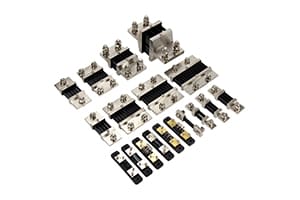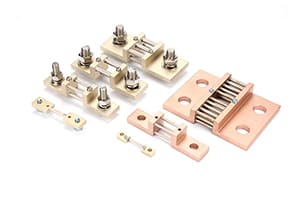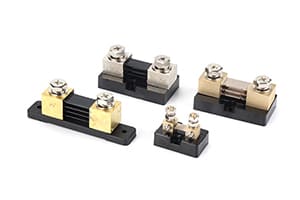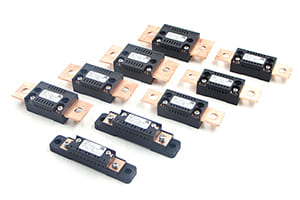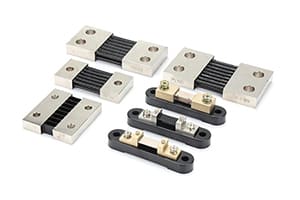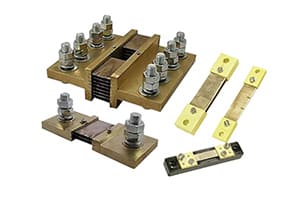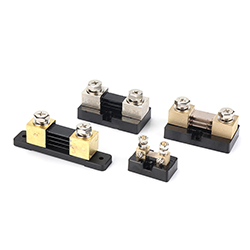
After testing thousands of current measurement devices, I've found that many engineers struggle to choose between DC shunts and other solutions like Hall sensors or current transformers.
DC shunts offer superior accuracy (up to ±0.1%), better long-term stability, and lower maintenance costs compared to alternatives. Their simple, reliable design makes them ideal for precise current measurement applications.
Through my 30 years of experience in current measurement solutions, I've helped countless clients evaluate different technologies. Let me share my insights about why DC shunts often emerge as the preferred choice, especially in high-precision applications where accuracy and reliability are crucial.
Why Choose DC Shunts Over Hall Sensors?
In my recent project with a major electric vehicle manufacturer, they switched from Hall sensors to DC shunts after experiencing significant drift issues in their battery management systems.
DC shunts provide better temperature stability, zero drift characteristics, and higher accuracy compared to Hall sensors. They don't require external power and maintain consistent performance over their entire lifetime.

The advantages of DC shunts over Hall sensors are significant and measurable. Hall sensors require external power supplies and complex signal conditioning circuits, increasing system complexity and potential failure points. They also suffer from temperature drift and aging effects that can reduce measurement accuracy over time.
In contrast, DC shunts operate on simple resistive principles, requiring no external power. Their linear response remains stable across their operating range, and they're immune to electromagnetic interference that often affects Hall sensors. I've seen installations where DC shunts maintain their initial accuracy for over a decade, while Hall sensors required regular recalibration or replacement.
What Makes DC Shunts Better?
A solar power plant manager once told me they saved over $50,000 annually in maintenance costs after switching to DC shunts from alternative current measurement devices.
DC shunts excel with their simple design, exceptional reliability, and minimal maintenance requirements. Their direct measurement principle eliminates complexity and reduces potential failure points in critical systems.

The superiority of DC shunts stems from several key factors. Their passive nature means no power supply is needed, reducing system complexity and eliminating power-related failures. The simple resistive principle ensures consistent performance without the need for complex calibration procedures or signal conditioning.
Temperature stability is another crucial advantage. Our DC shunts use specially designed alloys with extremely low temperature coefficients, typically less than 20 ppm/°C. This ensures accurate measurements across wide temperature ranges without the need for compensation circuits. The robust construction also makes them highly resistant to mechanical stress and vibration.
How Do DC Shunts Outperform Others?
During a recent industrial automation project, we compared various current measurement solutions. DC shunts demonstrated superior accuracy and reliability in every test scenario.
DC shunts consistently outperform alternatives in accuracy, long-term stability, and cost-effectiveness. Their direct measurement principle provides more reliable results than indirect methods used by other technologies.

The performance advantages of DC shunts become particularly evident in long-term operations. Unlike current transformers that can suffer from core saturation or Hall effect sensors that require regular recalibration, DC shunts maintain their accuracy specifications throughout their lifetime. This translates to lower total cost of ownership and more reliable measurements.
In high-current applications, DC shunts show exceptional performance stability. They handle overload conditions better than electronic solutions and provide more accurate measurements at both low and high current ranges. The absence of magnetic components also means they're immune to external magnetic field interference, a common problem with other current measurement technologies.
Conclusion
After three decades of experience in current measurement solutions, I can confidently say that DC shunts offer the best combination of accuracy, reliability, and cost-effectiveness for most applications. While alternatives like Hall sensors and current transformers have their place, DC shunts excel in applications requiring precise measurements and long-term stability. Their simple design, minimal maintenance requirements, and exceptional performance make them the preferred choice for critical current measurement applications. Whether you're working in power generation, industrial automation, or electric vehicle systems, DC shunts provide a proven solution that consistently outperforms alternatives.



